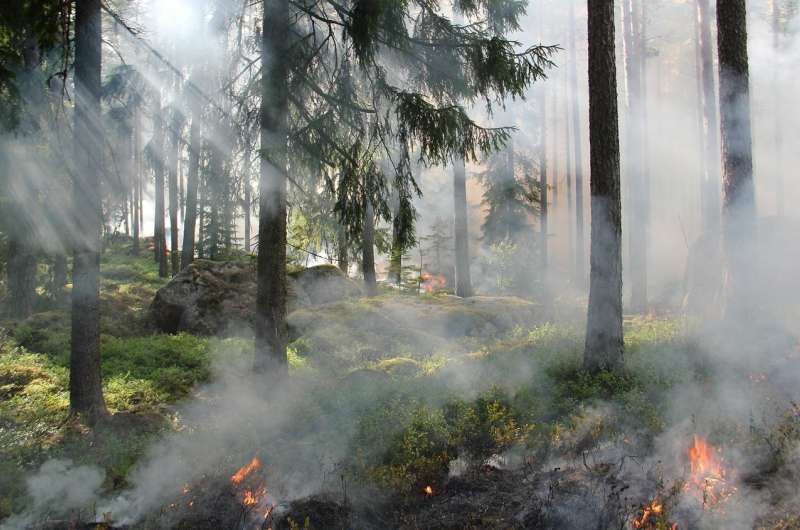This article has been reviewed according to Science X's editorial process and policies. Editors have highlighted the following attributes while ensuring the content's credibility:
fact-checked
reputable news agency
proofread
EPA clears Washington state to do more controlled burns to prevent wildfires

Washington firefighters now have more planning time and a longer season to ignite the controlled burns they use to prevent massive wildfires threatening landscapes and homes and blanketing the state in choking smoke.
The U.S. Environmental Protection Agency approved Washington's smoke management plan last week, marking the first update to the state's main document guiding prescribed burns in more than two decades.
"This gives us better opportunities to do the harder, more difficult-to-achieve burns," said Vaughn Cork, fire regulation program manager for the state's Department of Natural Resources.
State officials lit at least four prescribed fires this spring and have plans for at least six more this fall. They're used to burn through grasses and foliage that build up over the years and dry out in the summer months, adding to the wildfire risk across the state.
As climate change warms the region and worsens drought conditions, state officials have repeatedly warned of the increasing wildfire risk year after year.
Wildfire has already ravaged parts of Washington this summer. The Newell Road fire scorched more than 60,000 acres last month, prompting evacuations in eastern Klickitat County. Similarly, the Eagle Bluff fire burned more than 10,000 acres in Okanogan County, leading to evacuations in northern Washington and into Canada, which has suffered from thousands of wildfires this year.
Last week a fast-moving wildfire on the Hawaiian island of Maui tore through the town of Lahaina, killing dozens of people and destroying hundreds, perhaps thousands, of buildings.
Whether the updated management plan will mean more prescribed burns for Washington next year is not yet clear, Cork said. But it should mean that fewer burns will be canceled at the last minute and fewer wasted resources, he said.
Prescribed burns are perhaps the most important tool firefighters have to mitigate wildfire risk, Cork said. In recent years, the people organizing and executing them have faced logistical challenges.
First, under the old smoke management plan, those scheduling the burns were forced to decide if weather conditions were right for their fire on the morning it was scheduled, Cork said. With only a few hours lead time, that complicated larger burns.
That constraint led to canceled burns and it prevented firefighters from being directed to other, short-notice opportunities, Cork said. Now, they can rely on meteorological advances to check those weather conditions ahead of time.
"The new plan lets us approve those burns the day before," Cork said. "Folks have more time to get ready."
Extra lead time should mean fewer cancelations and bigger burns, Cork said.
This spring, DNR burned about 585 acres on state lands and nearby plots, said spokesman Will Rubin.
"We need the right weather conditions, ground conditions, and available resources (including personnel) all available at the same time in order to execute a burn," Rubin said. "The revisions to the smoke management plan will help create more instances where we can check all those boxes."
Cork said the updated plan also allows state officials to burn on weekend days, which were previously off limits, allowing their fall burn season to start earlier in September than in previous decades.
State officials resumed the burns last year after not having conducted prescribed burns for nearly two decades, in part because of air quality policies aimed at curbing the amount of smoke in the air.
The state Department of Natural Resources is responsible for prescribed burns, but its smoke management plan requires approval from the EPA because the federal agency enforces the Clean Air Act. Both state and federal officials praised the updated plan and the flexibility it provides.
Casey Sixkiller, a regional administrator with the EPA, said in a news release that the updates will help state officials better prevent wildfires and reduce the amount of toxic smoke they produce.
"With this plan, we'll be able to do the work we need to keep our skies and lungs clear," Washington Public Lands Commissioner Hilary Franz said in the release.
2023 The Seattle Times. Visit seattletimes.com. Distributed by Tribune Content Agency, LLC.





















